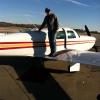Tire Pressure
-
Members Online
- N201MKTurbo
- Aerodon
- AJ88V
- jamesyql
- TNIndy
- Griswold
- Niko182
- shawn-201zb
- DXB
- MikeOH
- ohdub
- kortopates
- LANCECASPER
- flyboy0681
- christaylor302
- Richard Murdoch
- Rmnpilot
- redbaron1982
- pilot_jb
- dzeleski
- Hank
- Mcstealth
- RangerM20
- BlueDun
- dkkim73
- KSMooniac
- Igor_U
- George Thomson
- Beard
- Jaystew324
- Bob K
- Ragsf15e
- 67 m20F chump
- 201er
- Lax291
- Bpshea50


Recommended Posts
Join the conversation
You can post now and register later. If you have an account, sign in now to post with your account.